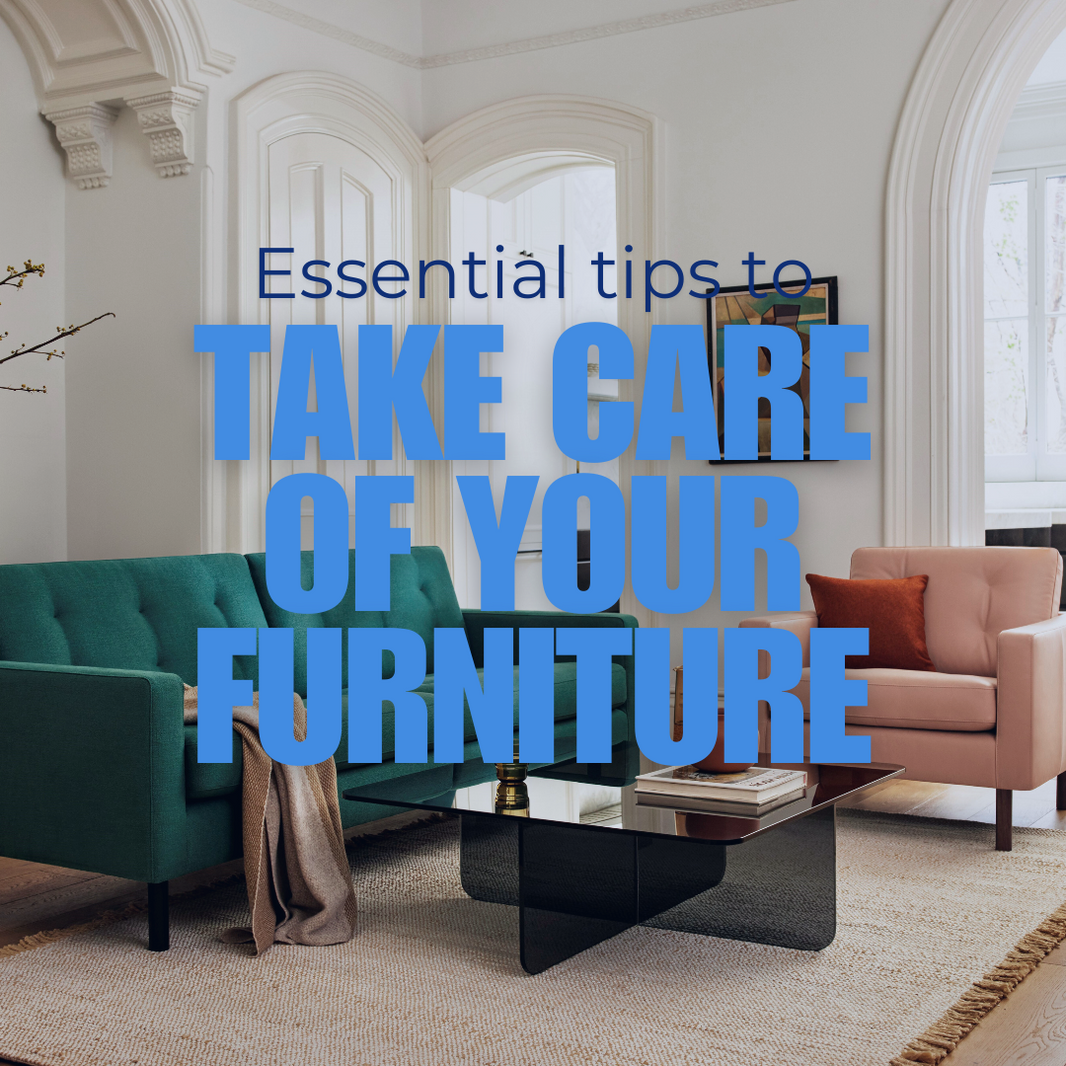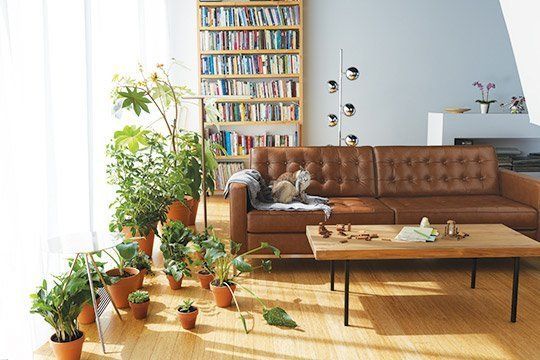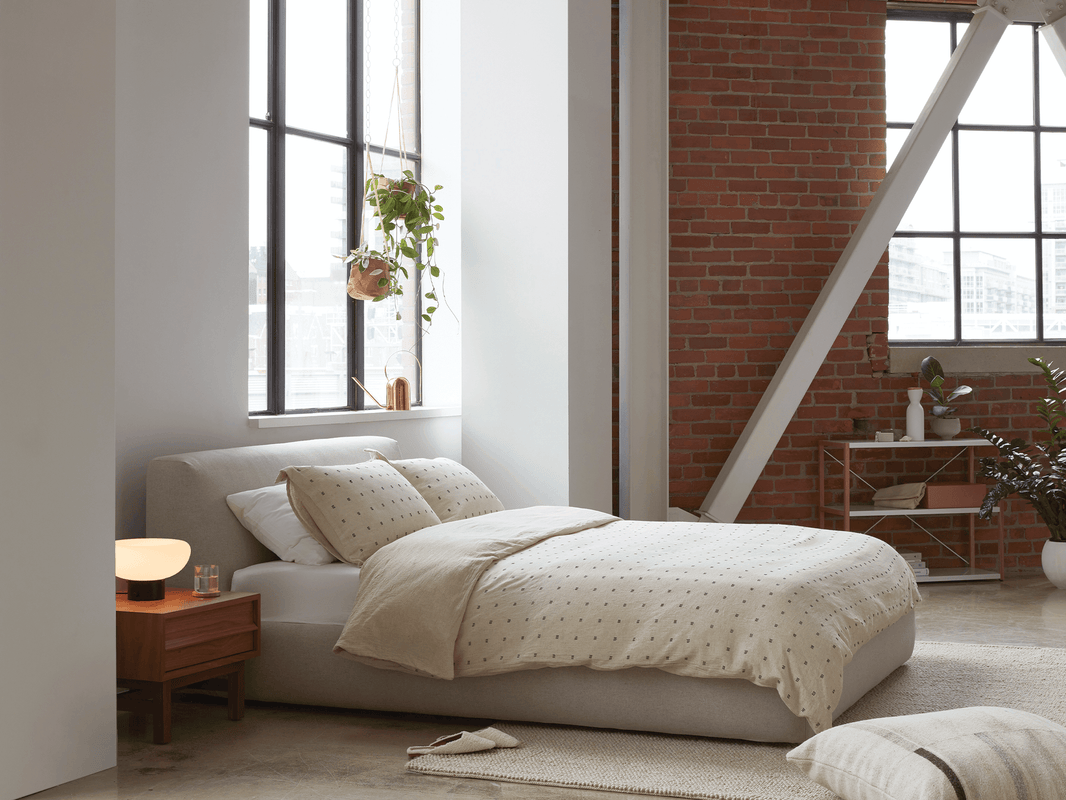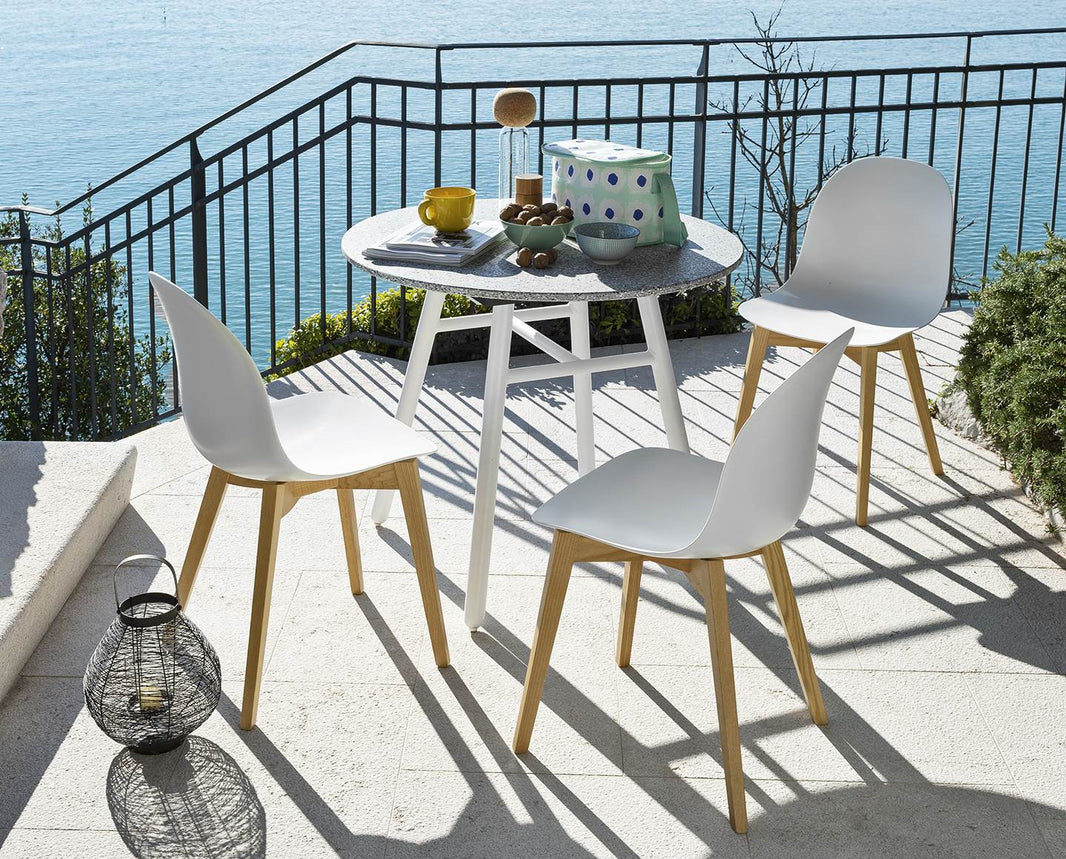Since 2001, EQ3 has been a front runner in defining Canada’s nebulous design identity. The Winnipeg-based company specializes in modern furnishings and home decor for every room in the house. Defined by simple, clean lines with function at the heart of every design, each piece is rigorously conceptualized, designed and executed by a select group of Canada’s leading designers. And if that doesn’t have you singing the national anthem, how about the fact that EQ3 produces as much of their product in Canada as possible, manufacturing all of their own upholstery pieces in their Winnipeg factory.
We interviewed Product Development Manager, Enri Tielmann to dive deeper into this creative company’s psyche to learn the secret of their success. With over 12 stores in Canada and the US, you can find the EQ3 product line at StudioYdesign.

Tell us about your background. Were you always creative?
I’ve always been intrigued by the creative process — the idea that you can have a vision and turn it into a reality. My dream job as a kid was to be a product developer for Lego. Lego is basically a simplified model of the real world; it has the ability to create something new that was not there before. As a child, I was also engaged in playing in the forest and carving sculptures out of found wood. I thought it was so intriguing to remove pieces of wood until a form emerged and there was nothing else to remove.

Describe your path leading to EQ3.
I studied Theology in Brazil in 2005 and when I was finished I went back to Germany to study business and economics. I was always intrigued by creative fields, especially companies that are involved in innovative product development from ideas on paper to making it available to a broad audience. During my studies in Germany, I reached out to EQ3 to do an internship and in 2010, Canada was my home for half a year. During my internship, I was involved in kicking off the e-commerce platform at EQ3. I returned to Germany to finalize my studies and got a call from EQ3 with a job offer. My options were to continue with the e-commerce project or work in product development. Personally, I was interested in product development so I moved with my wife to Winnipeg.

What is your role at EQ3 now?
From Germany, I went into a managerial role in the upholstery category. My role at EQ3 today is to oversee the product development efforts of the entire team. Product development efforts are divided into three categories: case goods, accessories, and upholstery. Our intention is for customers to walk into any EQ3 store or dealer and see a lifestyle offering for complete rooms. Product development is multi-faceted and each category has its own unique challenges and opportunities. With case goods for example, I enjoy traveling to our facility in Indonesia where we do 60% of our case items and work with a local team. Or we travel to India where we develop our rug offerings — we also have a full-time employee in India.

Describe the process of developing a new product?
The product development team and our creative director meet in the middle of the year to analyze our product lines by category in order to identify opportunities. During the creative process, we attend several trade shows around the world and keep ourselves informed of where the market is going and what colours and materials are being used so we can progress our designs and integrate the latest ideas into our new collections.
Our goal is to give a diverse offering at different price points. As we get further into the process, we generate a list of characteristics and constraints that guide our decisions and refine our goals. We try to cater to a need that we see in the market. Is it versatility? Basic? Or are we going to cater to a need that we predict will emerge? Once we identify those constraints, the actual design process can start. Sketches and ideas can begin with the constraints working as guidelines.
Tell us a little bit about the pen to paper process.
For upholstery, I work with AutoCad for plane views — I can look at the product from all angles and work with proportions. When I finalize a design, we review it in a design council where we discuss whether we have addressed our original design brief and those constraints we defined. Then we plot a big print out for the research and development team.
The R&D team can then build the interior of the product — the muscle, fat and skin. The ‘first built’ phase is the opportunity to understand the product’s spatial presence and how it will function in a real environment. What people don’t realize is that it can take up to ten iterations and refinements until our expectations are met. This process can take three months if it all runs seamlessly.

How do you stay on top of new innovations and what suppliers can offer?
We attempt to challenge the production capabilities of our sub-suppliers in order to bring new techniques to the mass market that haven’t been available before. For example, for our latest collection we are importing components from a specialist in Italy because they are able to give us the precision we needed. At EQ3, we are passionate about challenging the status quo of how to create new upholstery techniques with each new piece. Every upholstery piece we have developed in the last five years has usually challenged standard ways of how the industry does it or a certain status quo that was already established. We are always exploring new possibilities and capabilities with suppliers to serve our visions.

Where do you personally feel inspired?
I am most inspired during my personal and business travel — especially while visiting my family in Brazil. My mind does not stop and suddenly something catches my attention, it can be ordinary objects or moments. Also, I am inspired by the beautiful forms or architecture that are applicable to furniture. I am inspired by the architecture of Oscar Neimeyer and his intriguing design philosophy. He took a modernist approach but combined sinuous curves or organic shapes with rectilinear design language.

Any particular product you are especially proud of?
The R&D team laughs because I always say the latest piece is the one I’m going to buy for my home. Every design is so unique and when we tackle a new challenge, we get so excited about the outcome. I particularly like the Eve collection (seen below) for its very balanced proportion and classic, timeless approach. We are so excited about our fall collection 2017 — it will be quite innovative in the way we approach it. Watch for its launch in August.

Tell us about the new Spring Cello Collection/2017.
The name itself, the Cello Collection is a reference to the elegant stringed instrument. The original meaning of the word contains an augmentative and diminutive characteristic — an oxymoron or a contrast. The Cello Collection represents this contrast — full-bodied with a strong spatial presence on one hand yet carefully proportioned and quite light in appearance.
The other dichotomy is that it has well-defined architectural lines paired with a combination of sinuous and soft surfaces. We integrated memory foam into our seating so the seating story is a combination of memory foam with feather filled back cushions for a supremely comfortable seating experience. Complex in concept, the design is simple and clean.








